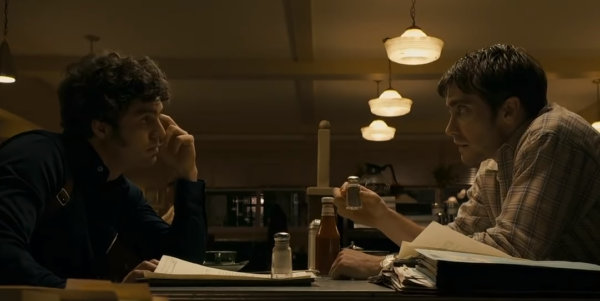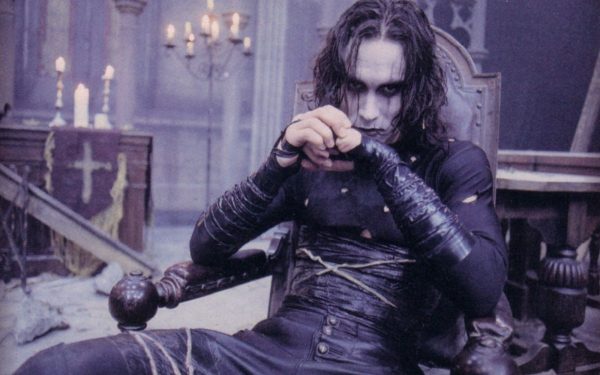Tom Jolliffe looks at Matt Reeves’ The Batman, and the movie influences littered within…
So The Batman has settled itself in cinemas across the world. The box office coffers are merrily heaving and the industry itself is given a much needed extra shot of adrenaline to keep death from its door. The verdicts have largely settled on the film being great. There’s been some hyperbolic exaggeration that this might be a genre redefining masterpiece (much like Joker). The film doesn’t particularly redefine genre, and only really redefines how we’ve seen Batman in live action on the big screen. This is Detective Batman, something approaching closer to some of the darker, grimier depictions in comics. We’ve been saying this about every generation of the character of course. Tim Burton’s Batman was the dark, gothic, graphic novel brought to life, whilst Chris Nolan gave us the dark, gritty, grounded Batman, before Zack Snyder gave us a dark and tortured graphic novel (again) Batman. Whoever reboots in another decade (inevitable) will likely go the same way and come out with the definitive ‘dark’ take on the Dark Knight.
Elsewhere in the verdicts for the film, other consensus suggests the film is far too long (it is), it’s over hyped (kind of), or it’s the most boring piece of shit ever (a minority contrary opinion that is always hyperbolically present in modern popular cinema). For my own verdict, I lie as a fan of Detective fiction and neo-noirs who dug the film. The dripping wet, grimy visuals, all dank, and colour that’s only found in the occasional neon, appeals to me in a stylish film that has more substance than we’ve seen from Bats than anything post The Dark Knight, but doesn’t have that much substance. The Detective element is a novelty and a welcome aspect for me, but the actually Detective part is occasionally held together rather flimsily, particularly in a sagging middle that almost loses grip on the clues and clue solving. Part of this problem does also lie in the length and three hours in a film that also isn’t heavy loaded with action (an element I actually dug, because relentless CGI assaults get wearisome very quickly) is wholly unnecessary and threatens to lose the audience. If it were warranted, that would be one thing, but there’s repetition, superfluous scenes and unnecessary double backs. Saying all this, is judging this on Scorsese’s “cinema” terms fair? Or should the comparison be toward what Marty might call “theme park attractions”? It’s certainly between the two. It’s not The Godfather, but it is also the best comic book film, probably since The Dark Knight. Nolan’s Joker-centric film is more worthy of obtaining a masterpiece (almost) label and is more assuredly ‘cinema.’
There are an array of influences that permeate Reeves mostly engrossing, visually resplendent opus. These are very direct influences and some are indirect. I’ll start with one of the most obvious. A deranged killer with a particular target in his radar and an intricate plan to directly involve the detective(s) on his tail, lays out clues with every victim. It’s a dark neo-noir, plenty of grim locations, rain, night settings and a righteous quest from its deranged villain. Se7en, the kind of serial killer thriller we see all too little of these days, is certainly one major comparison that many have picked up on and certainly has been a direct source of inspiration for Reeves take on the character. Unravelling the clues doesn’t quite have Se7en’s ingenuity, but regardless, if feels like a worthy imitator which has the more visceral action beats and colourful characters a Batman film requires, layered over it.
David Fincher also made Zodiac, based on the infamous Zodiac killer. There’s certainly layers of this within The Batman too. The Riddler is a psychopath who is wholly assured his intellect won’t be bested. He won’t be discovered, at least until a point he plans to be. The aesthetics certainly have a Fincher level of assurance too, and predilection for dark, occasionally (almost) monochromatic visuals. You might also look at Denis Villeneuve’s Prisoners too. Less so the central plot about a kidnapped girl and desperate father on the hunt for a killer, but those dank visuals, and a protagonist descending into a moral blur where the ‘hero’ and ‘villains’ lines of morality almost overlap. Additionally the very visceral, and confined shooting of the standout car chases in both Prisoners and The Batman have a similar feel as well. Whilst Denis and Fincher must retain a grounding in the laws of reality, Reeves uses as much comic book leeway as he can get away with, without it feeling inherently silly. So certainly, the action and fantasy elements make the action broader in The Batman.
A dark, rain swept, gothic world. It’s a comic book grounded in a dark lawless world beyond saving (almost). It is run by criminal enterprise, where anarchy becomes a pass time for the lower class of society. It’s comic book vengeance with a grunge aesthetic (and soundtrack). The visual similarities in The Crow and The Batman are undeniable. Alex Proyas’ dark comic world actually evokes its setting with brilliant clarity and dripping grotesqueness. It was different than say, the expressionist excess of Tim Burton’s Batman, which also blended together time periods with larger than life aesthetics. Proyas evoked the graphic novel source material brilliantly and the stylish montage shooting, full of precisely choreographed camera moves and poses from its protagonist, all appear again in Reeves’ incarnation of Batman. Burton’s influences might have been broader, almost cartoony in places, but there’s a more consistent focus with Proyas/Reeves in their comic book films. That said, Brandon Lee’s enigma and charisma beneath that dark quest for vengeance make him a little more of an endearing and complex protagonist. He’s crossing that line into ruthless brutality, when his ire is focused on the wrong doers, but his morality becomes blurred. As said, in terms of the moral ambiguity, I think Reeves could have gone darker with Wayne, pushed it even more, or at least more subtly showed the emotional trauma simmering beneath. Draven (ala Lee’s depiction) still feels more of a three dimensional (flawed) human. Perhaps the PG13 rating for Reeves’ film took some potential edge from this Wayne, where his violence or actions might have been pushed closer to that precipice to the dark side.
With sunken eyes and a detachment from his soul, Dolph Lundgren’s portrayal of Frank Castle in The Punisher was undervalued upon release. In time the film, and indeed Lundgren, have found plenty of reappraisal. For the opening third of The Batman particularly, Pattinson plays Wayne as a vapour. He’s a husk of a man drifting on the fumes of vengeful instinct. He loiters in the dark underbelly of a crime ridden world, targeting perpetrators. He stalks the city on his motorbike, riding through dark alleys, desolate roads and through tunnels. He has no life but this, to the point his demeanour becomes near vacant, almost devoid of a soul he once had. In The Batman where the arc skews from Lundgren’s Punisher, is that some hope and humility is found thanks to his encounters with Selena Kyle, Alfred, and to a lesser extent Gordon. Additionally the films resolution is about the futility of vengeance, whereas Dolph’s Punisher hasn’t escaped that thirst quite yet. Additionally, our villain roster perfectly balance between slimy mobsters (a great Jeroen Krabbe), and the more outlandish (in Punishers case, a female Yakuza boss, played with theatrical verve by Kim Miyori).

This one is a bit more of a stretch, but a feeling from Michael Giacchino’s enjoyably morose score. It felt with its recurring bass themes that it was always just on the border of breaking into the imperial march. I suppose Star Wars has a lot about father/son. Coming to terms with the sins of the father, your heritage, driven in a quest by notions of revenge, which Luke certainly feels when he gets the impression Darth Vader took the life of his father (this is of course clarified in The Empire Strikes Back). Still, those recognisable themes to signify the coming of darkness almost threaten to cross, though Giacchino inevitably pulls back where Williams is licensed by the fantasy genre to get more grandiose.

Gotham a la Reeves is a world not unlike Los Angeles 2019, as depicted in Ridley Scott’s Blade Runner. A world of bustling streets, criminal activity and a world divided by the lower classes living on ground level, and the affluent in ivory towers. Many of Scott’s rainy, dark and dripping establishing shots are echoed in the world of Gotham which Reeves shows. Ironically, a big source of inspiration for Nolan’s Batman Begins, was Blade Runner. Indeed the first film created something of a distinguishable film world, that had some Blade Runner aesthetics, but only to a point. It feels much more direct in The Batman where rain and mist machines are put on overtime, and where the scummy mise-en-scene is cranked up to 11. Additionally, Blade Runner’s plot follows a gumshoe Detective, tracking criminals, but with his own moral ambiguity. The villains in Blade Runner, the Replicants, are biting back against the system that created them and which has left them devoid of choice. If the Riddler is born into a world where escaping a grim fate is impossible, despite political promises, then the Replicants are born to a short life of slavery, without freedom of choice. It’s that moral ambiguity that makes our heroes interestingly flawed, and the villains, engagingly sympathetic.
What are your thoughts on The Batman? Do you see similarities with any other films? Let us know your thoughts on our social channels @flickeringmyth…
Tom Jolliffe is an award winning screenwriter and passionate cinephile. He has a number of films out on DVD/VOD around the world and several releases due out in 2021/2022, including, Renegades (Lee Majors, Danny Trejo, Michael Pare, Tiny Lister, Nick Moran, Patsy Kensit, Ian Ogilvy and Billy Murray), Crackdown, When Darkness Falls and War of The Worlds: The Attack (Vincent Regan). Find more info at the best personal site you’ll ever see here.

















